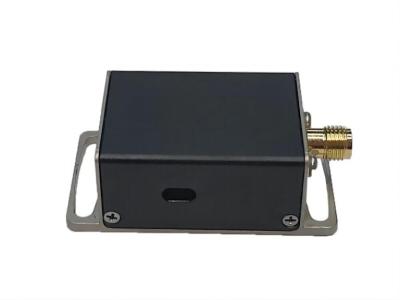The 1550nm Space AOM Series is a type of spatial light acousto-optic modulator designed to adjust the intensity or frequency of light beams. It works with wavelengths from the visible to the infrared range, making it adaptable for various optical applications. A key factor in its performance is its rise and fall time—this determines how quickly the device can modulate a beam or the width of its modulation bandwidth. To handle challenging environments, it uses a strong all-metal housing that boosts durability, while innovative packaging technology further enhances its reliability and stability when temperatures change.
This series stands out for features that make it easy to use and dependable in real-world setups:
- Fast modulation speed: Allows quick adjustments to light beams, which is essential for applications that need rapid signal changes.
- High diffraction efficiency: Ensures light is bent and processed effectively, reducing unnecessary signal loss.
- Strong temperature stability and reliability: Maintains consistent performance even when temperatures fluctuate, suitable for labs, factories, or other variable environments.
- Compact size: Takes up little space in optical systems, simplifying integration with other components.
This product is tailored to meet needs across multiple fields that rely on precise light control:
- Lidar: Supports accurate distance measurement and object detection, used in areas like autonomous driving, environmental monitoring, and geographic mapping.
- Material processing: Aids in laser-based tasks such as cutting, engraving, or modifying materials, ensuring precise and consistent results.
- Laser Doppler systems: Helps measure velocity or vibration with high accuracy, common in engineering tests (e.g., checking machine performance) and physics research.
- Image processing: Enhances light control for clearer image analysis, useful in industrial inspection or scientific imaging projects.
- Cold atomic physics: Assists in experiments involving cold atoms, supporting research in quantum physics and related scientific fields.
The 1550nm Space AOM Series offers two main models—SGT100-1550-1TA and SGT200-1550-0.2TA—each with specs tailored to different needs. Key details are shown below:
Note: Custom wavelengths and frequencies are available if your project requires specific settings.
To get the best performance from the 1550nm Space AOM, we recommend its dedicated Low-Power N-type Acousto Optic Driver. This module delivers customized radio frequency (RF) signals to drive the AOM (and other acousto-optic devices) with power needs below 3W. It generates precise RF signals that create ultrasonic waves in the AOM’s crystal—these waves are what let the AOM modulate, deflect, or tune the light beam.
- Small size: Fits easily with the AOM, saving space in your optical system.
- Fast response time: Matches the AOM’s modulation speed for smooth, seamless operation.
- Low power consumption: Reduces energy use while maintaining reliable performance.
- High temperature stability: Efficient heat dissipation and a design matched to the AOM ensure consistent work in varying temperatures.
Driver models are paired with the AOM’s center frequency:
- For 100MHz AOM (SGT100-1550-1TA): SGT100-33-N-1D, SGT100-33-N-1A1, SGT100-33-N-1A5
- For 200MHz AOM (SGT200-1550-0.2TA): SGT200-33-N-1D, SGT200-33-N-1A1, SGT200-33-N-1A5
Key specs include:
- Modulation input: Supports digital signals (3.3–5V high level, 0–0.2V low level) and analog signals (0–1V or 0–5V) via SMA interfaces.
- RF output frequency: 100MHz or 200MHz, matching the AOM’s center frequency.
- Working voltage: 24V DC (standard) or 12V DC (optional), with a maximum power consumption of 10W.
- Packaging: Available in N or N2 options to fit different installation spaces.
For more details—including product images, custom quotation requests, or full technical documents for the 1550nm Space AOM Series and its compatible driver—visit our official page:
1550nm Space AOM Series
